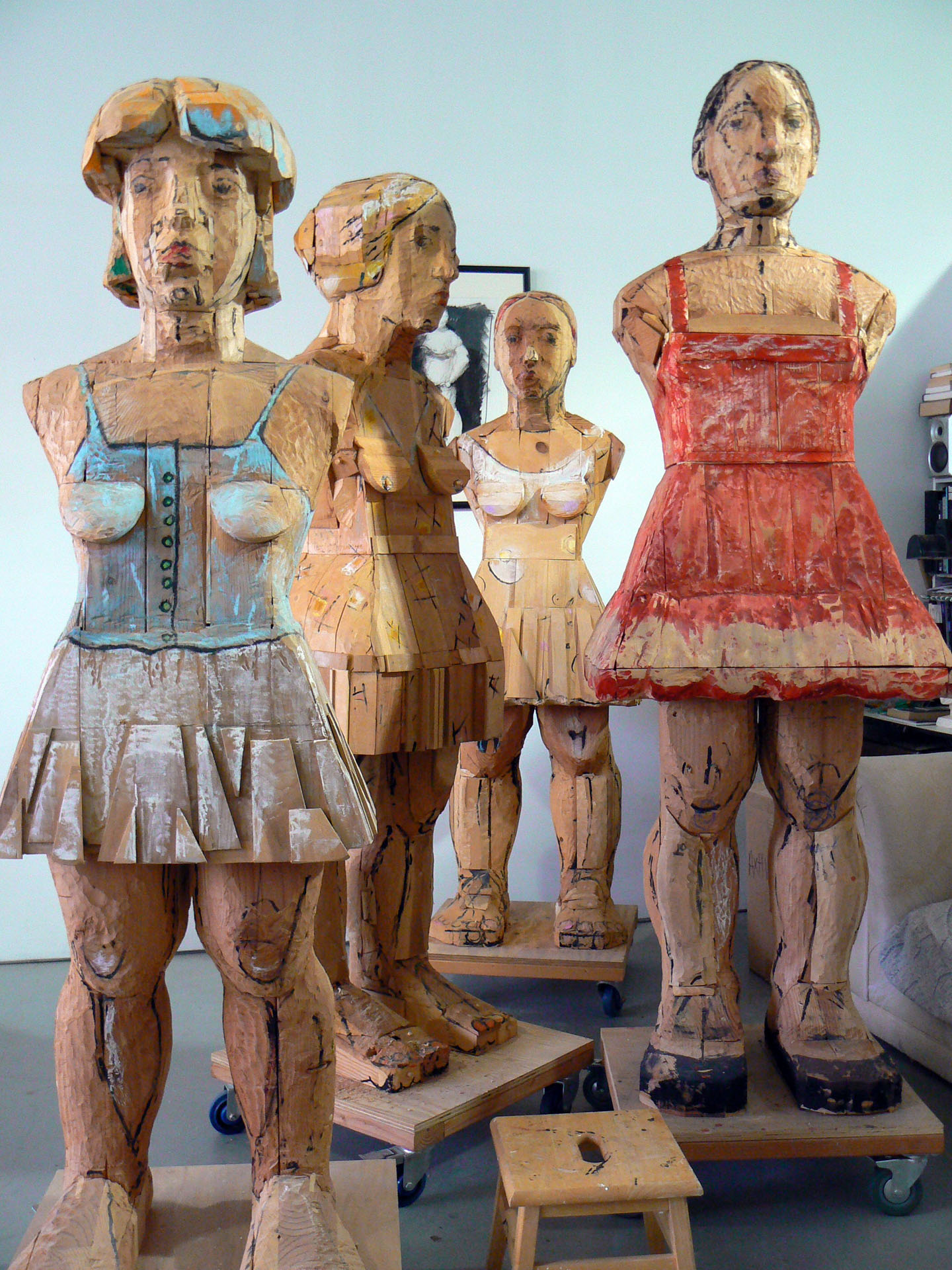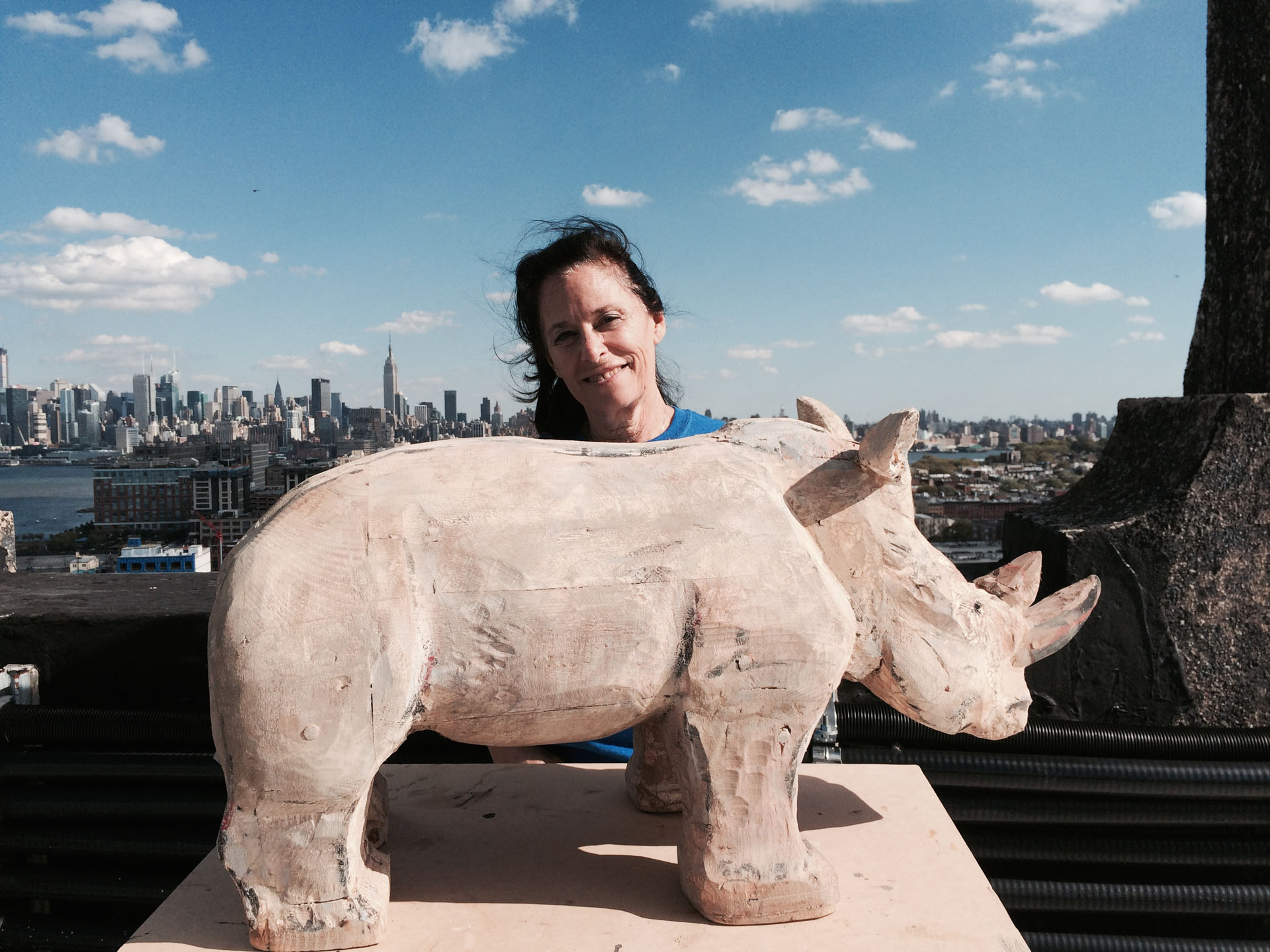A FORMER ARCHITECT EMPLOYS HER SKILLS, IMAGINATION, AND MATERIALS AT HAND TO EXPRESS HER LOVE OF FASHION AND PASSION FOR “WOMEN WARRIORS”
BY LAURA D.C. KOLNOSKI
Carol Schwartz’s path to artistic expression began with architecture and chutzpah. After graduating high school in Brooklyn, where dyslexia propelled her toward visual arts, she wanted to attend the Pratt Institute, but cost was an obstacle. A sign of the times, her father was only willing to fund a home economics education, prompting an unconventional plan: if he would disown her (on paper only), she could get a bank loan. The funds paid for her first year, and scholarships followed.

The art and design education she received at Pratt formed a foundation of problem solving and mastery of myriad aspects of construction. Early jobs included designing at an architectural firm creating dormitories for the State University of New York, and at another on the West Coast for a company working with the San Francisco Bay Area Rapid Transit system. Upon returning east and settling in Englewood, Schwartz’s journey continued at Manhattan’s Art Students League where she studied painting and drawing.
Her husband Howard encouraged her to attend an adult course at NYU to address her dyslexia, which helped her to “figure out how to see things.” Schwartz became a stay-at-home mom of two daughters, teaching art to children and seniors in Teaneck. When her oldest daughter began to read, her efforts at overcoming the learning disability became successful. When her youngest turned three, her mother convinced her to return to work. “She told me it was important for women to work, and she was right,” Schwartz recalled. “I need to work and fill my life with purpose, just as raising a family does.”
While she didn’t pursue an architect’s license because she was hesitant to take the test due to her dyslexia, Schwartz joined Quest Diagnostics, where she rose to oversee a team of primarily male architects and engineers for 17 years, becoming director of facilities planning and real estate. She saw the writing on the wall during years of management shake-ups there and prepared for her next chapter by joining the Art Students League. When Quest let her go, she returned to the League full time, serving on the board of directors as vice president. Then she met her daughter’s friend’s father who was working in wood, and was instantly intrigued. “I thought I should try it, and I loved it,” Schwartz recalled. “At heart I am a builder and am accustomed to the planning process, which I love. I like to break boundaries, at least when it comes to art. My imagination is always working.”

Wood sculpture entered her repertoire, but she hit a bump in the road. The League does not allow the use of power tools, so she was asked to leave when the noise and dirt from her sanding became problematic. “Instead of whittling and carving, I was building,” Schwartz said, adding the League’s director invited her to move to his Jersey City studio. “That’s how my career as a sculptor took off.”
Fashion is another fascination Schwartz developed early while watching Doris Day, Loretta Young, and Audrey Hepburn films, along with the stylishly dressed women outside her window.
“I see high fashion as art,” she said. “Clothing is how we present ourselves. It conceals and reveals. Garments are transformational, powerful in provoking respect or disrespect. They can elevate one’s status, affect our state of being, or inspire.”
Schwartz was again put to the test during the pandemic when the materials she normally worked with became scarce. Her imagination collided with her love of fashion and life experiences in art and architecture.

“When COVID hit, cardboard and paper were plentiful due to online ordering,” Schwartz said. “Friends and neighbors were happy to recycle their magazines, leaving them outside my door. It was time to experiment and explore my long-held interests with new materials.” She especially enjoyed rolling paper bearing words and assembling her pieces using the techniques she learned making three-dimensional architectural models. One happy result was her recent exhibition at the Monmouth Museum in Lincroft, aptly titled “The Architecture of Clothing.”
“Woman have always been at the core of my work,” she explained. “With the subject of clothing in mind, I took this opportunity to repurpose paper and cardboard into sculptural reliefs.”
From September 1 through October 28, Schwartz’ works will be part of the “Sculptural Diversity” exhibit at the Barron Arts Center in Woodbridge.
Carol Schwartz carolschwartzsculptor.com


